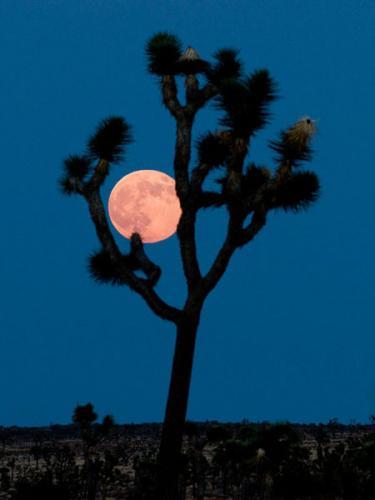Parks, especially those in locations with minimal night sky distractions from artificial light, can be great locations for observing—and photographing—celestial events such as last night's so-called Super Moon.
A number of parks offer special night sky programs, but your opportunities to enjoy those out-of-the-world scenes aren't limited to organized events. With or without expert advice, the right locale and timing can provide a chance for a super photo.
As the photos on the left from Joshua Tree National Park and Arches National Park confirm, the foreground setting in a natural area can add a special touch to a photo.
What made last night's moon "Super"?
The term Super Moon refers to times when two events coincide: a full moon and a "perigee moon." The later occurs because the moon's path around the earth is not a perfect circle, but an ellipse, with one side of the path (the "perigee") being closer to the earth than the opposite side of the path. Full moons that occur on the perigee side of the orbit appear to be extra big and bright.
Geoff Chester of the U.S. Naval Observatory says, "The 'Moon Illusion' is probably what will make people remember the three super moons this summer, more than the actual view of the Moon itself.”
According to NASA scientists, "The illusion occurs when the Moon is near the horizon. For reasons not fully understood by astronomers or psychologists, low-hanging Moons look unnaturally large when they beam through trees, buildings and other foreground objects. When the Moon illusion amplifies a perigee Moon, the swollen orb rising in the east at sunset can seem super indeed."
"I guarantee that some folks will think it's the biggest Moon they've ever seen if they catch it rising over a distant horizon, because the media will have told them to pay attention to this particular one," says Chester.
As the above photo confirms, when that "distant horizon" is combined with a dramatic foreground feature, the results can be special.
In case you missed last night's Super moon, you'll have one more chance this calendar year, on September 9.




Comments
And yet another fine shot of last Monday's Supermoon - this one from Yellowstone - is found at this link:
https://www.flickr.com/photos/yellowstonenps/14896831645/